
How the "Owl Butterfly" may have gotten the spot on its wings.
- Subject:
- Agriculture & Natural Science
- Biology
- Material Type:
- Lesson
- Provider:
- Khan Academy
- Author:
- Sal Khan
- Date Added:
- 04/14/2016

How the "Owl Butterfly" may have gotten the spot on its wings.
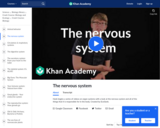
Hank begins a series of videos on organ systems with a look at the nervous system and all of the things that it is responsible for in the body.
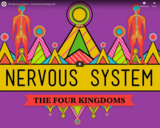
The video resource "The Nervous System - CrashCourse Biology #26" is included in the "Biology" course from the resources series of "Crash Course". Crash Course is a educational video series from John and Hank Green.

This "Neuronal Development" learning object is the from the Sumanas resource series. Sumanas offers a robust selection of content and services that are directed at enhancing the learning experience.
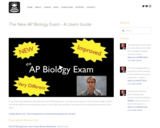
In this video Paul Andersen describes the new AP Biology Exam. This exam will be given for the first time in May of 2013 and will be different from all previous exams. In this video Paul Andersen describes the scoring and the two parts of the exam.
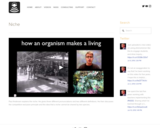
Paul Andersen explains the niche. He gives three different pronunciations and two different definitions. He then discusses the competitive exclusion principle and the idea that a niche cannot be shared by two species.
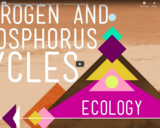
The video resource "Nitrogen & Phosphorus Cycles: Always Recycle! Part 2 - Crash Course Ecology #9" is included in the "Ecology" course from the resources series of "Crash Course". Crash Course is a educational video series from John and Hank Green.

A Primer for Computational Biology aims to provide life scientists and students the skills necessary for research in a data-rich world. The text covers accessing and using remote servers via the command-line, writing programs and pipelines for data analysis, and provides useful vocabulary for interdisciplinary work.
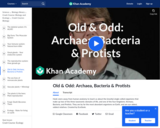
Hank veers away from human anatomy to teach us about the (mostly) single-celled organisms that make up two of the three taxonomic domains of life, and one of the four kingdoms: Archaea, Bacteria, and Protists. They are by far the most abundant organisms on Earth, and are our oldest, oddest relatives.

The video resource "Old & Odd: Archaea, Bacteria & Protists - CrashCourse Biology #35" is included in the "Biology" course from the resources series of "Crash Course". Crash Course is a educational video series from John and Hank Green.

This is the second in a series of major's biology classes covering the principles of biology. The course is an integrated study of basic concepts concerning animal biology emphasizing animal evolution, diversity, phylogeny and a comparative look at general principles of animal form and function. This course is a lab science class and students will be required to participate in weekly lab activities and document their lab work for successful course completion.

Biol 213 is the third course of a year-long series of biology courses for Biology majors. The first third of the course surveys prokaryotes, protists, fungi, and plants, focusing on diversity, evolution, and life cycles from an evolutionary perspective. We will then describe plant anatomy, physiology, growth, responses to the environment, and reproduction, emphasizing flowering plants. We will finish with ecology, focusing on population, and community ecology and expanding outward to ecosystems and the introduction of biodiversity and conservation.

This course is the first in a three-course sequence that introduces biology in preparation for advanced study in areas of biological science such as medicine, dentistry, cell biology, microbiology, or veterinary medicine. Biol 211 introduces students to cellular structure and function. Major topics studied include: energy capture and utilization, cellular reproduction, inheritance, genetic mutation, protein synthesis, gene expression, and biotechnology.

General Biology is intended to leave the student with an integrated view of the living world including the nature of sciences, evolution of biological organization, composition and organization of living substances, metabolism, control, reproduction, heredity and ecological relationships. This class meets the A.A. degree lab science requirement.

General Biology is intended to leave the student with an integrated view of the living world including the nature of sciences, evolution of biological organization, composition and organization of living substances, metabolism, control, reproduction, heredity and ecological relationships. This class meets the A.A. degree lab science requirement.

This on-line open source BIOL 260 (Microbiology) is a health sciences oriented course in microbiology. It has a laboratory component and the labs are intended to be integrated throughout the course. BIOL 260 is intended primarily for students going in to health-related professions and will emphasize the human disease and health related areas of microbiology. Areas of microbiology such as environmental, agricultural, taxonomy or astrobiology may be mentioned but not emphasized.

This course will introduce you to a general overview of the biological world. Important concepts will be reinforced and expanded upon through completion of weekly laboratory activities and homework assignments.
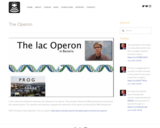
In this video Paul Andersen describes the elements of an operon. The promoter allows the RNA polymerase to transcribe the required genes. The operator and repressor regulate the expression of the genes by blocking the RNA polymerase.
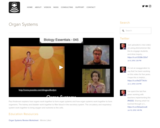
Paul Andersen explains how organs work together to form organ systems and how organ systems work together to form organisms. The kidney and bladder work together to filter blood in the excretory system. The circulatory and respiratory system work together to bring oxygen and nutrients to the cells.
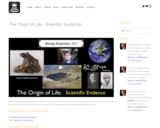
Paul Andersen discusses scientific evidence of the origin of life on our planet. He begins with a brief discussion of the age of the earth and ends with the future of humanity. He includes geologic, chemical and molecular data.